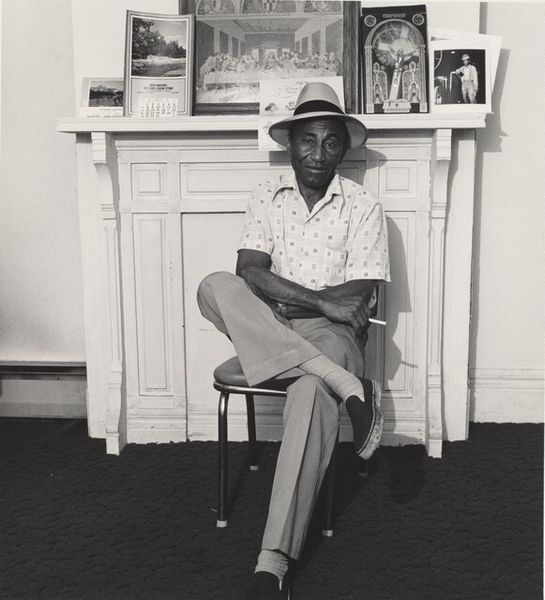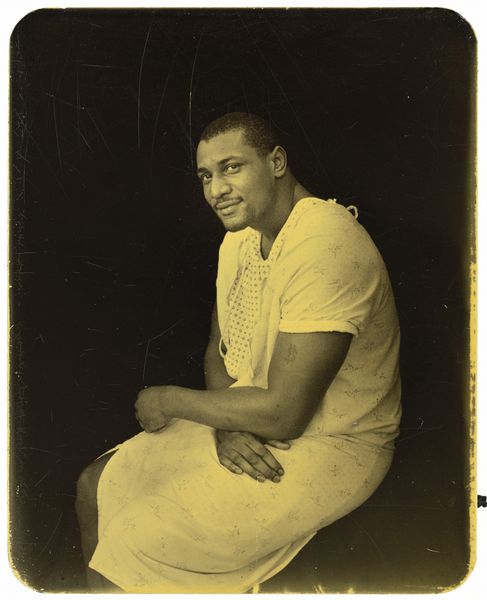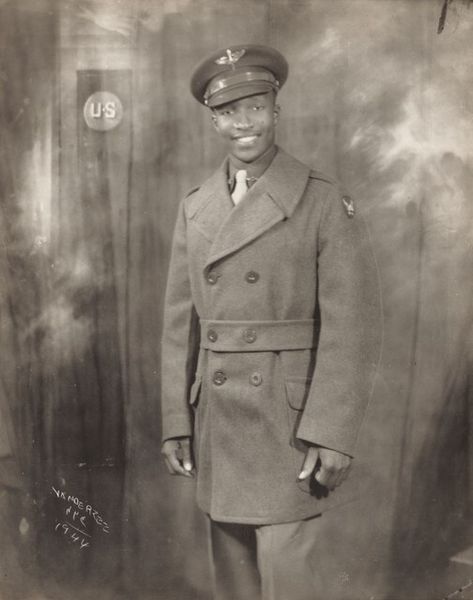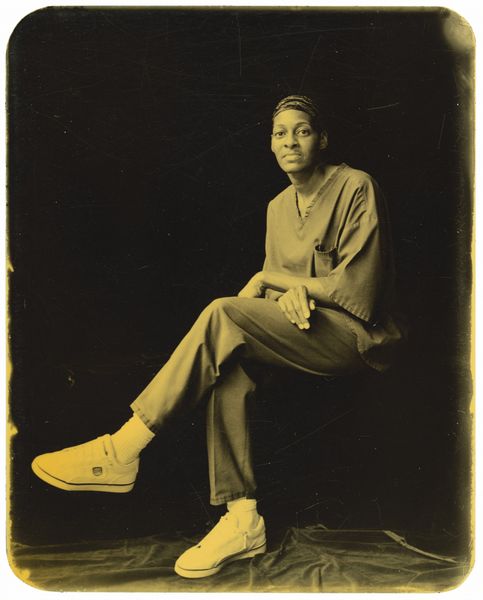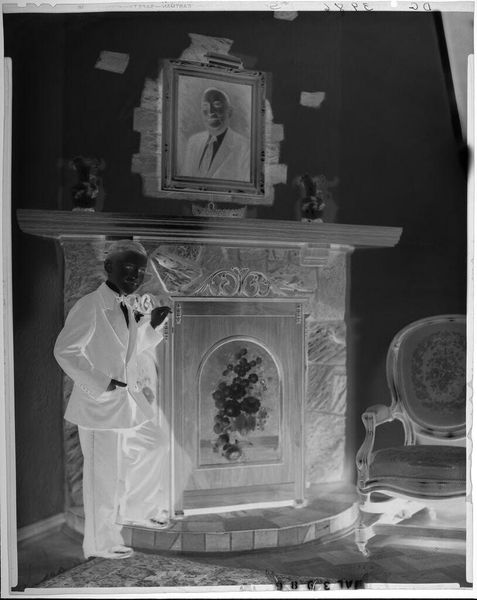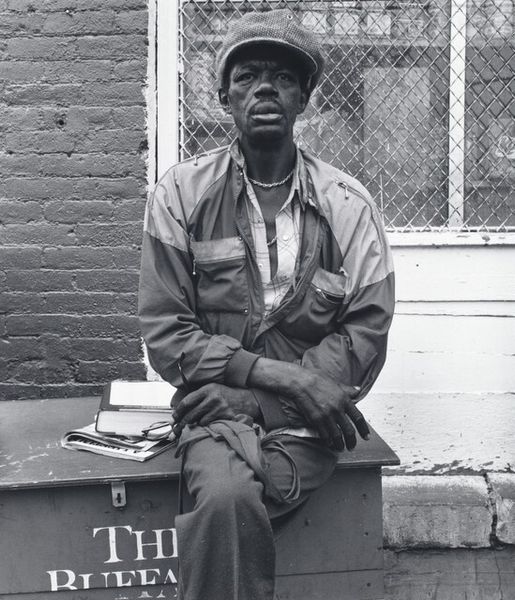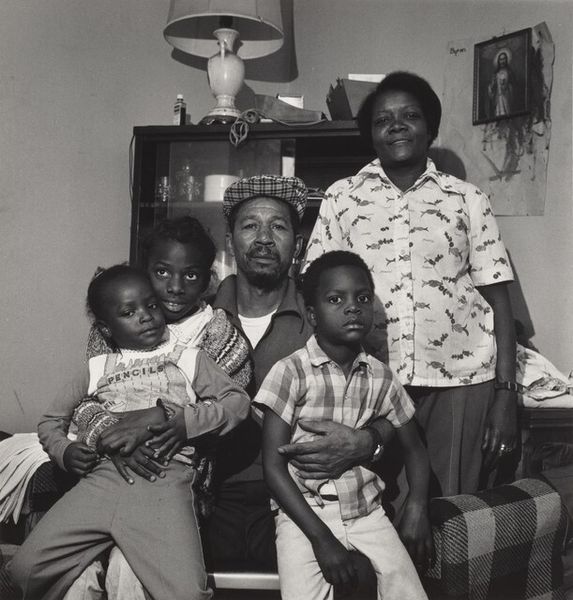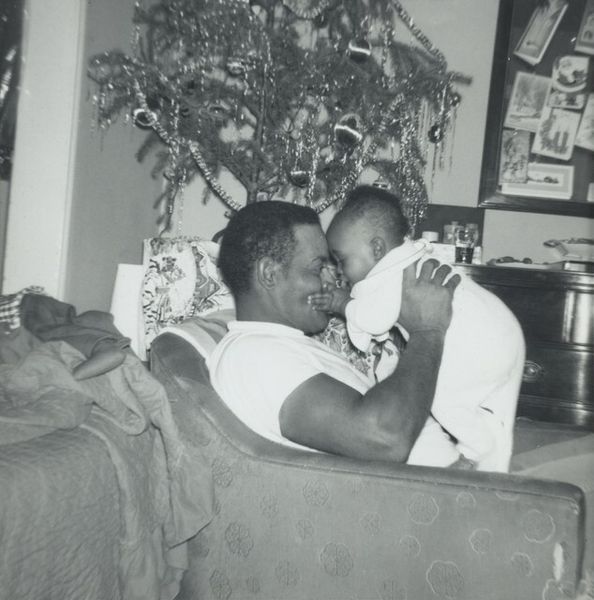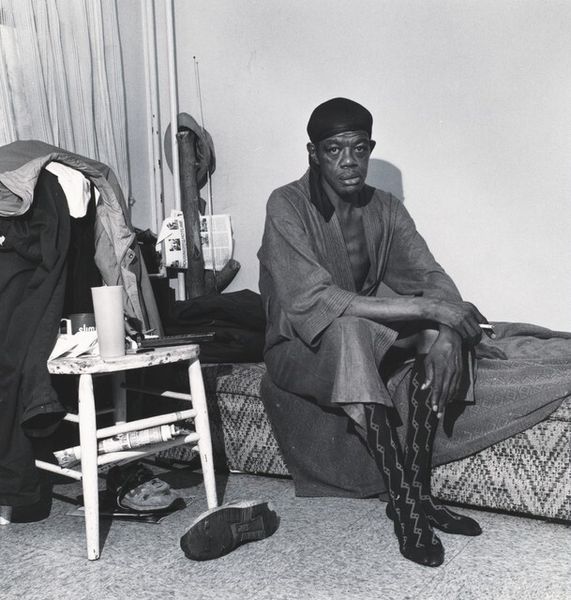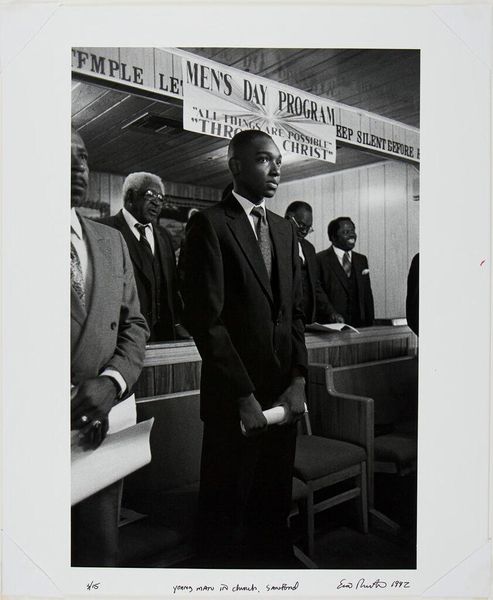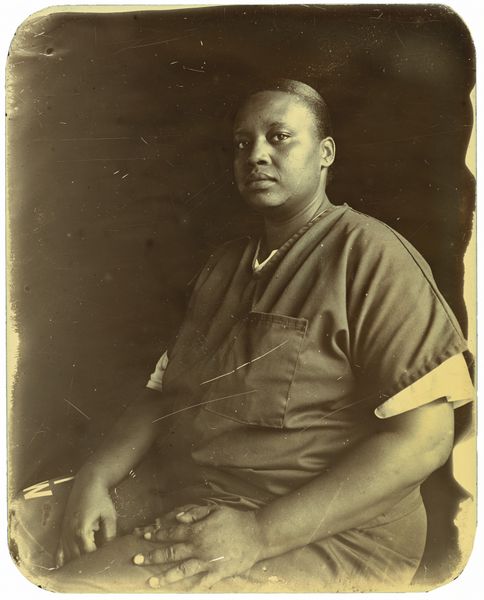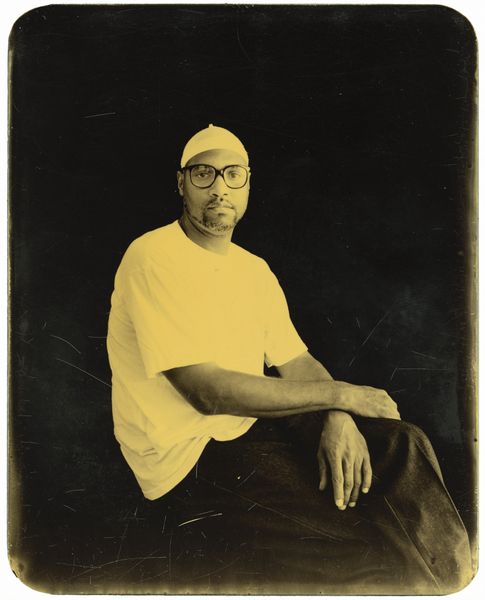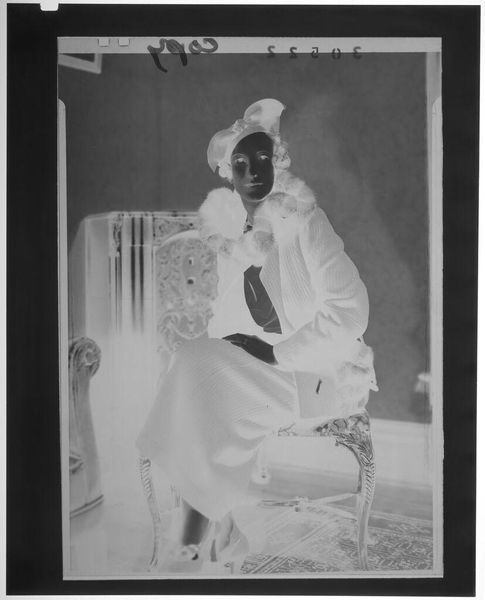
photography
#
portrait
#
contemporary
#
black and white photography
#
black and white format
#
social-realism
#
photography
#
historical photography
#
black and white
#
monochrome photography
#
monochrome
#
realism
#
monochrome
Dimensions: image: 17.7 x 16.5 cm (6 15/16 x 6 1/2 in.) sheet: 25.2 x 20.3 cm (9 15/16 x 8 in.)
Copyright: National Gallery of Art: CC0 1.0
Curator: This striking photograph, "James Mathis, Amherst Foundry (Working People series)," was taken in 1987 by Milton Rogovin. It's part of a broader project documenting working people in their homes and communities. Editor: My first thought is just how dignified James Mathis appears, sitting so confidently amidst…well, all that stuff behind him. It’s like he’s the anchor in a sea of ornate details. The contrast between him and the surroundings tells a whole story, doesn’t it? Curator: Absolutely. Rogovin’s work always considers context. This image shows how individual lives are situated within larger social and economic structures. Look at the ornate mirror and pictures on the TV—they speak to aspirations and familial pride. It emphasizes the person beyond the job, refusing to let James only be a worker. Editor: Yes, it's more than just "worker." There’s a depth here. His direct gaze draws you in, and you can see a lifetime etched in his face. You know he is a proud man, maybe even stubborn! The fact that the portraits behind him, presumably his family, appear more formal, while his has this lived in relaxed gaze really elevates the humanity of this individual. I mean look at that power suit! He’s saying “I’m a somebody.” Curator: And Rogovin photographed men like James to emphasize their roles as someone. Rogovin believed that his images offered resistance to dominant narratives that devalue manual labor and those who perform it. Editor: There is this undeniable sense of intimacy. It's that feeling of stepping into someone's personal space, unannounced. Maybe a neighbor drops by, or he expects somebody at this hour. A raw simplicity to it. The bare bones, the direct portrait, no soft lights, no artifice. Curator: Precisely, and it's that honesty, combined with his focus on marginalized communities, that gives his work its political edge. Editor: For me, there's a compelling dialogue happening between personal and public, work and home, individual identity and the collective struggle of working-class America. I feel like his image honors that space of tension that many face in this country. Curator: Indeed. Rogovin invites us to look closely, to really see these individuals not as types, but as complex, valuable human beings. He also is telling us how the images he makes of other, even the artist’s pictures, create our social identities. Editor: What a beautiful, tender, and thought provoking lens through which Rogovin shows his world and the humans that form it. I see it.
Comments
No comments
Be the first to comment and join the conversation on the ultimate creative platform.
